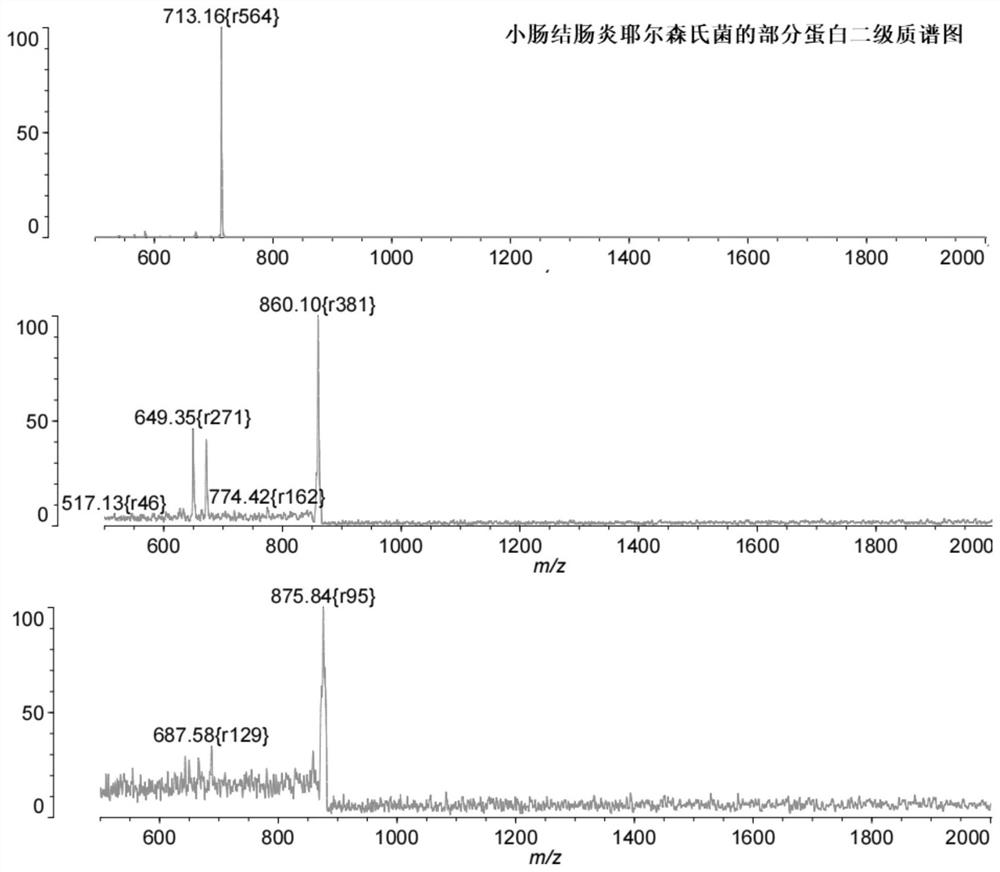Detection method for rapidly distinguishing yersinia enterocolitica from yersinia intermediary
A technology for Yersinia enterocolitica and Yersinia enterocolitica is applied in the detection field of rapidly distinguishing Yersinia enterocolitica and Yersinia intermedius, which can solve the specific identification between difficult genus and species and affect PCR Amplification results, complex antigenicity and other issues, to achieve a high degree of automation, rapid detection, and reduce the risk of human and environmental pollution
Pending Publication Date: 2022-05-27
INSPECTION & QUARANTINE TECH CENT SHANDONG ENTRY EXIT INSPECTION & QUARANTINE BUREAU +2
View PDF0 Cites 0 Cited by
- Summary
- Abstract
- Description
- Claims
- Application Information
AI Technical Summary
Problems solved by technology
PCR technology is a fast, sensitive, and specific technology, but at present, this technology still relies on the pre-enrichment step of the traditional method. The enrichment solution may contain PCR inhibitors, which will affect the PCR amplification results.
Both Yersinia enterocolitica and Yersinia intermedius belong to the genus Yersinia. It has been reported in the literature that the antigenicity of Yersinia is complex, and its antigenic properties are similar to those of other Enterobacteriaceae. Difficult to make specific identification between genus and species
Method used
the structure of the environmentally friendly knitted fabric provided by the present invention; figure 2 Flow chart of the yarn wrapping machine for environmentally friendly knitted fabrics and storage devices; image 3 Is the parameter map of the yarn covering machine
View moreImage
Smart Image Click on the blue labels to locate them in the text.
Smart ImageViewing Examples
Examples
Experimental program
Comparison scheme
Effect test
Embodiment 1
[0022] (1) Preparation of Yersinia enterocolitica (NICPBP52203) and Yersinia intermedia (CGMCC 1.6197) cultures
the structure of the environmentally friendly knitted fabric provided by the present invention; figure 2 Flow chart of the yarn wrapping machine for environmentally friendly knitted fabrics and storage devices; image 3 Is the parameter map of the yarn covering machine
Login to View More PUM
 Login to View More
Login to View More Abstract
The invention discloses a detection method for quickly distinguishing yersinia enterocolitica and yersinia intermediary, which is characterized in that a peptide fingerprint spectrum of the yersinia enterocolitica and the yersinia intermediary is detected by using matrix-assisted laser desorption ionization time-of-flight mass spectrometry, and the yersinia enterocolitica and the yersinia intermediary can be distinguished according to different characteristic peaks of the two yersinia enterocolitica. And identifying the characteristic protein, and distinguishing the yersinia enterocolitica from the yersinia intermediary. According to the method, the identification time is shortened by 1-2 days compared with that of an existing traditional biochemical experiment, the yersinia enterocolitica and the yersinia intermediary can be rapidly distinguished, and rapid detection is achieved. The method is high in automation degree and short in detection time, the probability that front-line detection personnel make contact with the food-borne pathogenic bacteria is effectively reduced, and the risk that the food-borne pathogenic bacteria pollute people and the environment is reduced.
Description
technical field [0001] The invention relates to a method for rapidly distinguishing Yersinia enterocolitica from Yersinia intermedius by using matrix-assisted laser desorption ionization time-of-flight mass spectrometry (Matrix-Assisted Laser Desorption Ionization Time-of-Flight Mass Spectrometry, MALDI-TOF MS) technology method for the detection of bacteria. Background technique [0002] Yersinia enterocolitica is widely distributed and can be found in raw vegetables, milk and dairy products, meat, soy products, salads, oysters, clams and shrimp. Also present in the environment, such as lakes, rivers, soil and vegetation. It has been isolated from the feces of livestock, dogs, cats, goats, squirrels, minks and primates. Around the harbour, many birds, including waterfowl and seagulls, may be carriers. It can cause a zoonotic disease called Yersiniosis, which can not only infect pigs, cattle, sheep and other animals, but also carry the bacteria in the feces of infected an...
Claims
the structure of the environmentally friendly knitted fabric provided by the present invention; figure 2 Flow chart of the yarn wrapping machine for environmentally friendly knitted fabrics and storage devices; image 3 Is the parameter map of the yarn covering machine
Login to View More Application Information
Patent Timeline
 Login to View More
Login to View More IPC IPC(8): G01N33/68G01N33/569G01N27/62
CPCG01N33/6851G01N33/56916G01N27/62G01N2333/24Y02A50/30
Inventor 吴丽娜贾俊涛李正义王伟唐静殷培军姜英辉张秋艳杨捷琳
Owner INSPECTION & QUARANTINE TECH CENT SHANDONG ENTRY EXIT INSPECTION & QUARANTINE BUREAU
Features
- R&D
- Intellectual Property
- Life Sciences
- Materials
- Tech Scout
Why Patsnap Eureka
- Unparalleled Data Quality
- Higher Quality Content
- 60% Fewer Hallucinations
Social media
Patsnap Eureka Blog
Learn More Browse by: Latest US Patents, China's latest patents, Technical Efficacy Thesaurus, Application Domain, Technology Topic, Popular Technical Reports.
© 2025 PatSnap. All rights reserved.Legal|Privacy policy|Modern Slavery Act Transparency Statement|Sitemap|About US| Contact US: help@patsnap.com



